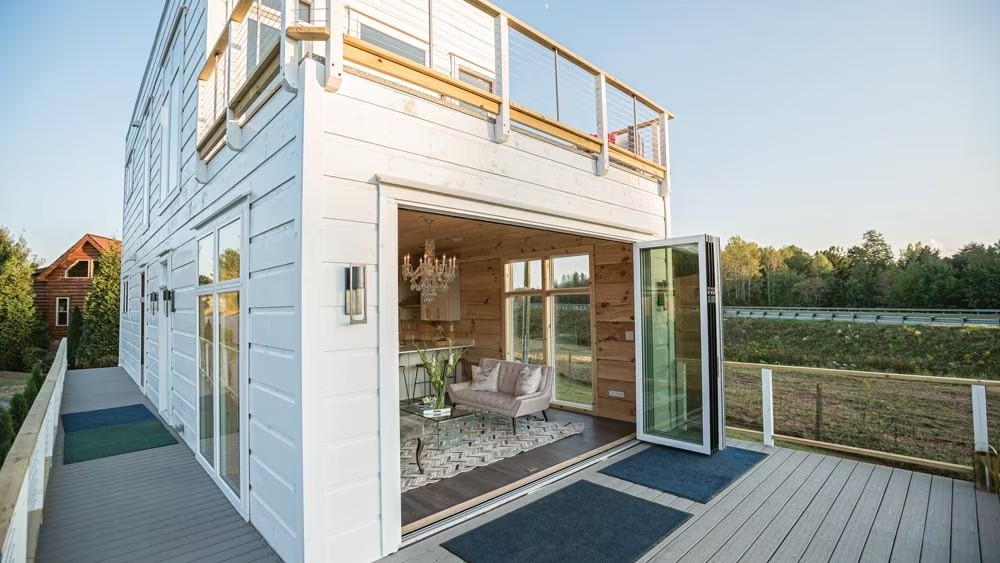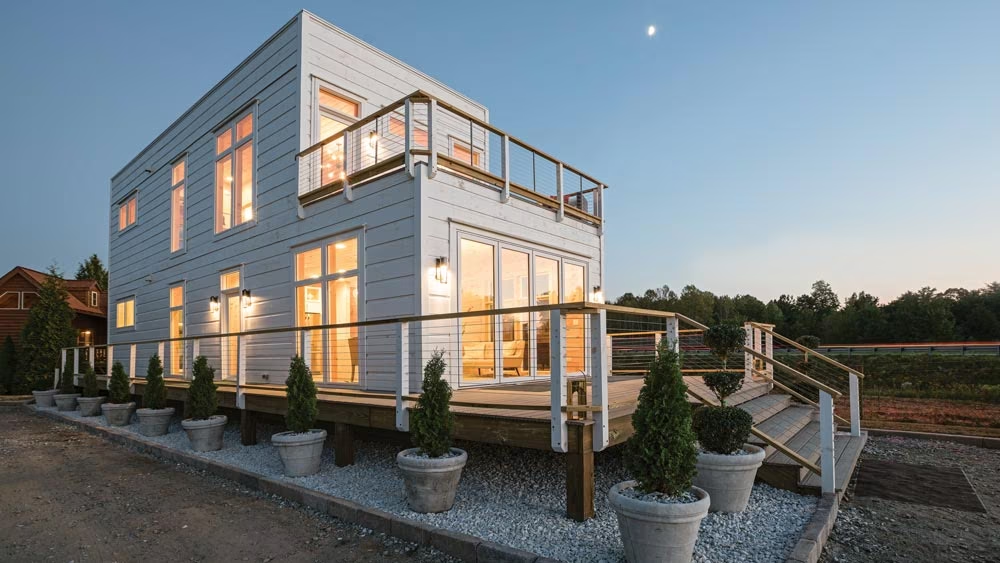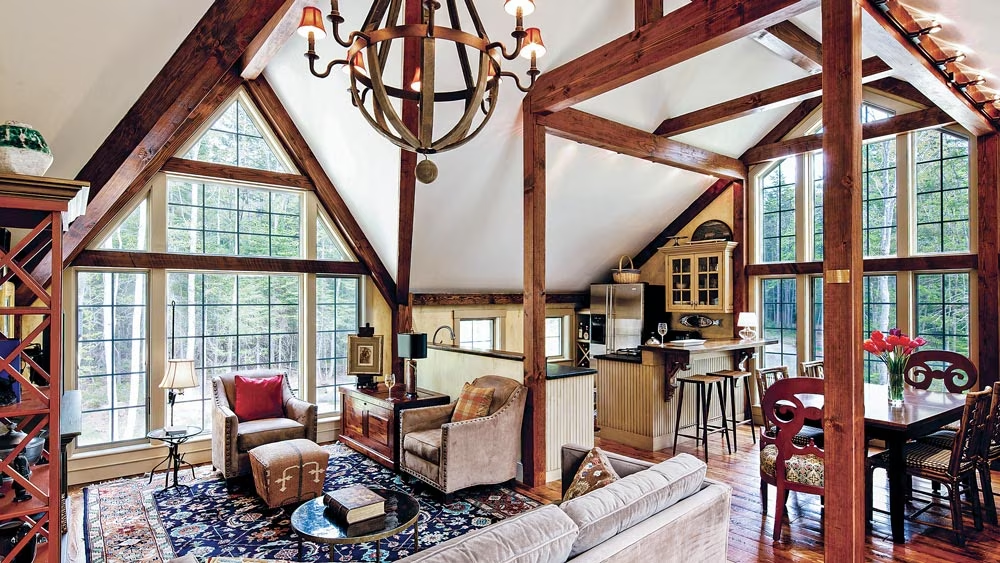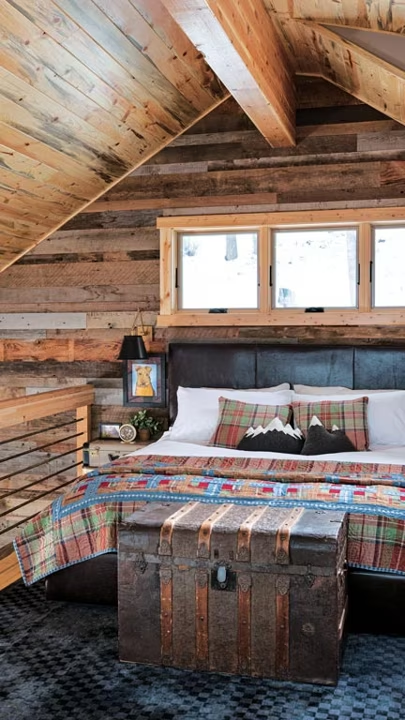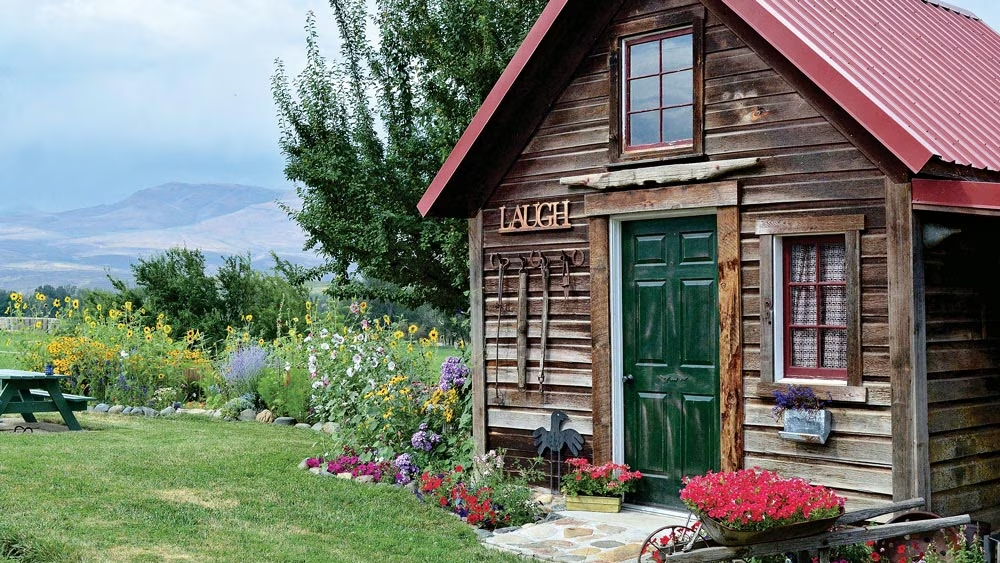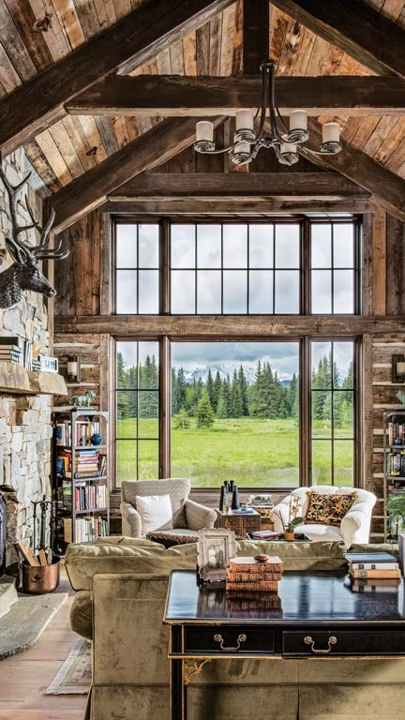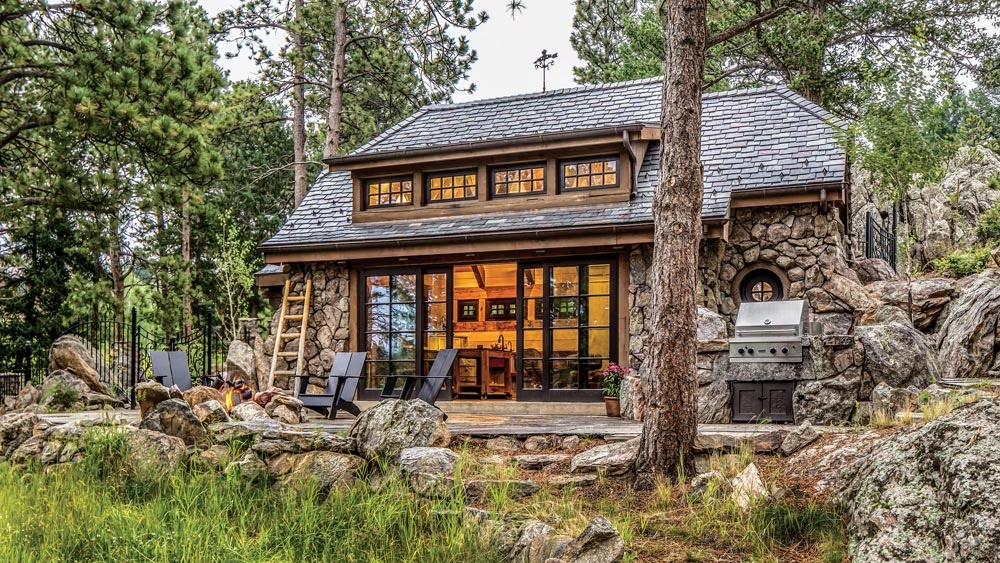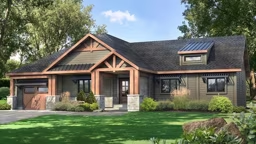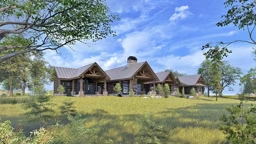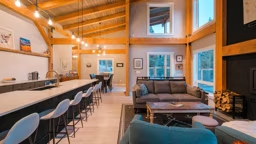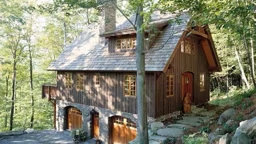Living small doesn’t have to mean sacrifice, especially with a log or timber home. In fact, people who live in smaller homes say they thrive on going compact. “It’s a great place to be one with nature and the outdoors,” says George Bierman, who chose a 1,300-square-foot log home for his getaway cabin in Pennsylvania.
Whether you’d like a small home for your primary residence or a weekend escape, there are benefits to reining in the square footage.
“People who are downsizing — especially empty nesters — don’t want the upkeep,” asserts Brad Mercer, sales manager for Timberhaven Log and Timber Homes in Middleburg, Pennsylvania. “They don’t want to clean a large home. They don’t need as many rooms or as much space anymore.”
Limiting size won’t limit your choices: You can find a wide range of small home designs offered by many log and timber home producers. After all, the first wood homes built in our country were diminutive out of necessity, so recapturing that essence is both charming and appropriate.
Why Go Small?
There are many reasons why people choose a small-scale home, which typically refers to any house under 2,000 square feet. One reason — especially with log home “kits” — is the desire to DIY. If you plan to build your own home, it’s wise to keep the project a reasonable size and maintain a simple roofline.
Frugality is another reason. In general, it costs less to build a smaller home. But beware of cost-per-square-foot comparisons where the small size skews the numbers, Brad cautions.
“With a small home, you still have a foundation, heating and cooling systems, plumbing; those are fixed costs. Labor is a fixed cost, too,” Brad explains. Still, building small can be an excellent way to get what you want and have it match your budget.
Lifestyle changes may be behind the small-home choice. Young couples may be looking to live with less debt or want to spend money on items other than a mortgage. Empty nesters could be shifting to a little single-level home to ease them into retirement.
Keep Design in Mind
To make a small log or timber frame home as comfortable and livable as possible, consider these design strategies:
Create flex spaces.
Rooms that can be put to more than one purpose are every small-home owner’s friend. Brad mentions that a loft can double as a home office, den or extra bedroom. Look for multi-functional furniture as well: Daybeds, sleeper sofas or Murphy beds can quickly transform a living space into a guest bedroom. A table with leaves can expand or contract depending on immediate needs.
Question everything.
What spaces will your small home definitely need? What could you do without? Not sure? Take a look around your current living quarters and take inventory of little-used spaces.
Maximize log and timber frame construction.
Open floor plans and vaulted ceilings go hand in hand with log and timber frame buildings, and they make a small home feel roomy. Within these open spaces, posts can be used to visually define but not separate spaces.
Connect to the outdoors.
Expanding indoor spaces to the outdoors will make a small home feel larger and give you extra living space (at least in fair weather). Plan for decks, porches or balconies. Consider retractable walls of windows to really open the space out to the exterior.
Think about the future.
“While empty nesters typically aren’t looking to expand their homes at some point, younger folks might be,” Brad says. “Plan ahead so an addition won’t look like an afterthought.” If your basement might be finished down the road, rough-in any plumbing while you’re building. It will save you time, headaches and money later on. And if you think you may want to size up one day, have your design team draft what that addition would look like at the start, so it can be easier to incorporate if and when you’re ready.
Remember mechanicals.
Especially with vacation cabins and camps, Brad often sees small homes built without basements. In these situations, owners must find spare square footage for the home’s mechanical systems. A mudroom could be the easy answer to the question: “Where do we put the water heater?”
Take it outside.
Are you looking for space in your home that could be relegated to an outbuilding or accessory dwelling? A workshop or a small casita might solve the need for hobby space or off-season storage.
Where to Save and Where to Splurge
Reducing square footage is something to plan carefully with your home’s designer or architect. Some functional areas, such as bathrooms and kitchens, require minimal clearances to be safe and operational. If you intend to stay in your home as you grow older, make sure it can accommodate a wheelchair with wider hallways and doorways.
A good way to minimize square footage is with efficient storage space. Choosing a small home may require you to downsize your stuff in addition to your square footage, but it’s a good idea to take the basics you’ll need into account when allocating storage space in your plans. For instance, where will the vacuum cleaner go? How about big bags of pet food or your book collection? Take a close look at your belongings with a critical eye and know before design is finalized what things you plan to hold onto and how you will stash or display them in your finished home.
A smaller home will save you money on maintenance and utilities over time and could give you the chance to spend in other areas. Log walls or timber framing will go a long way toward making the home special. With fewer rooms to furnish, you might be able to invest in heirloom furniture and artwork.
A material that would bust the budget in a large home may be feasible when less of it is needed. Brad has seen many “downsized” homes upgraded with top-tier materials, high-end appliances and luxury finishes.
One place not to scrimp is on windows and lighting. Shining light into every corner of your small home will help it feel airy and expansive.
Could a smaller house even make you a better person? George Bierman says spending time at his getaway cabin is relaxing, even when there’s work to do on the property. “Many of my close friends who visit me at my cabin tell me that when I’m there, I’m a different person.” That’s the impact of a cozy log or timber home.




